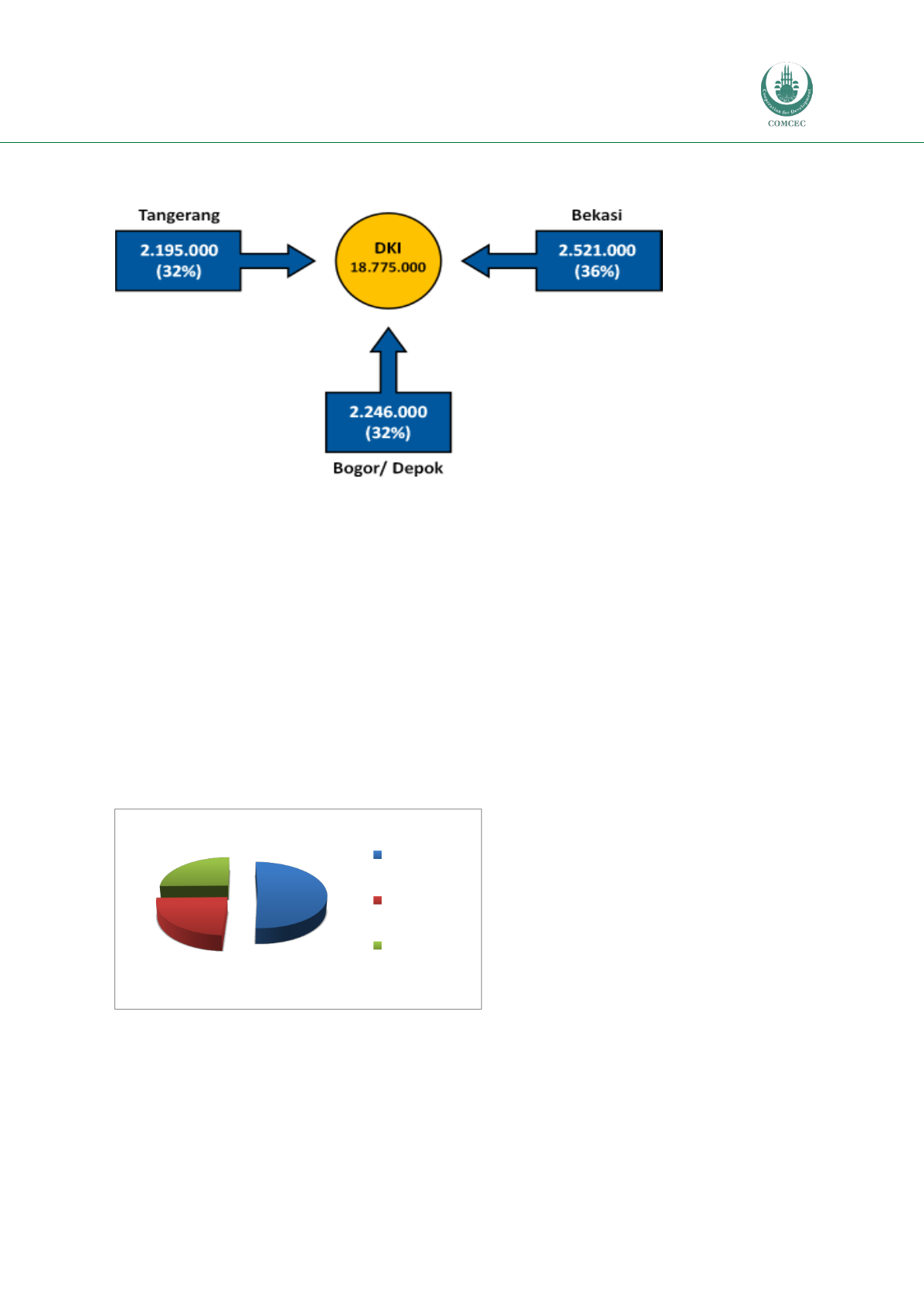

Urban Transport in the OIC Megacities
57
Figure 4: Daily trips in and to Jakarta in 2013
Source: Jakarta Transportation Agency in Figures, 2013
Another important issue is the nonexistence of an authority that coordinates transportation
developments for Jabodetabek. The national government is currently at the stage of establishing
Otoritas Transportasi Jabodetabek
(Jabodetabek Transportation Authority) to coordinate plan,
implement and monitor transportation developments in Jabodetabek. One of the tasks will be
developing new trajectories for land public transport modes such as heavy rail and buses. Many
experts are pessimistic about the success of this programme. There have been several attempts to
form such an institution in the past, but they have failed due to the strong political tensions among
provincial governments as the real authority lies with each provincial and local government in the
Jabodetabek area.
4.1.4.
Mode availability and shares
In 2013, there were 25.7 million trips per day in Jabodetabek and more than 50% of the trips were
made by motorcycles.
Figure 5: Modal share in Jabodetabek in 2013
Source: Jakarta Transportation Agency in Figures, 2013
4.1.5.
Private motorized transport
In 2013, there were 9.2 million private vehicles in Jakarta. Of these, around 3 million (33%) were cars
and 6.2 million (67%) were motorcycles. This number increases by 8% on average per year. As
described above, private vehicles account for 75% of the modal share in Jakarta. The high share of
private vehicles is also caused by regulated and heavily subsidized fuel prices by the government. The
low price of petrol has led to fuel not being valued by consumers and so widespread waste is endemic.
50.8%
23.9%
25.3%
Motorcycles
Private cars
Public
transport

















